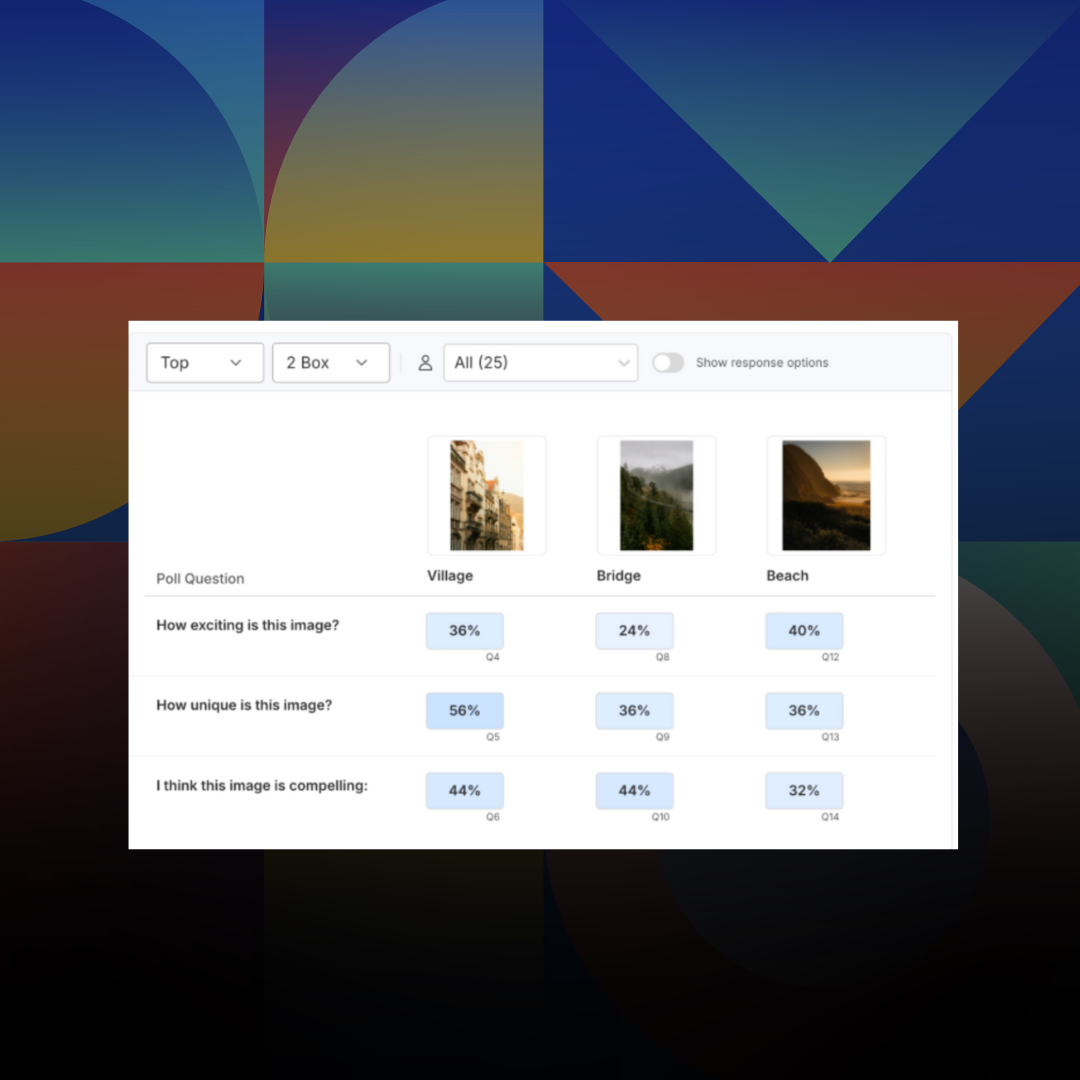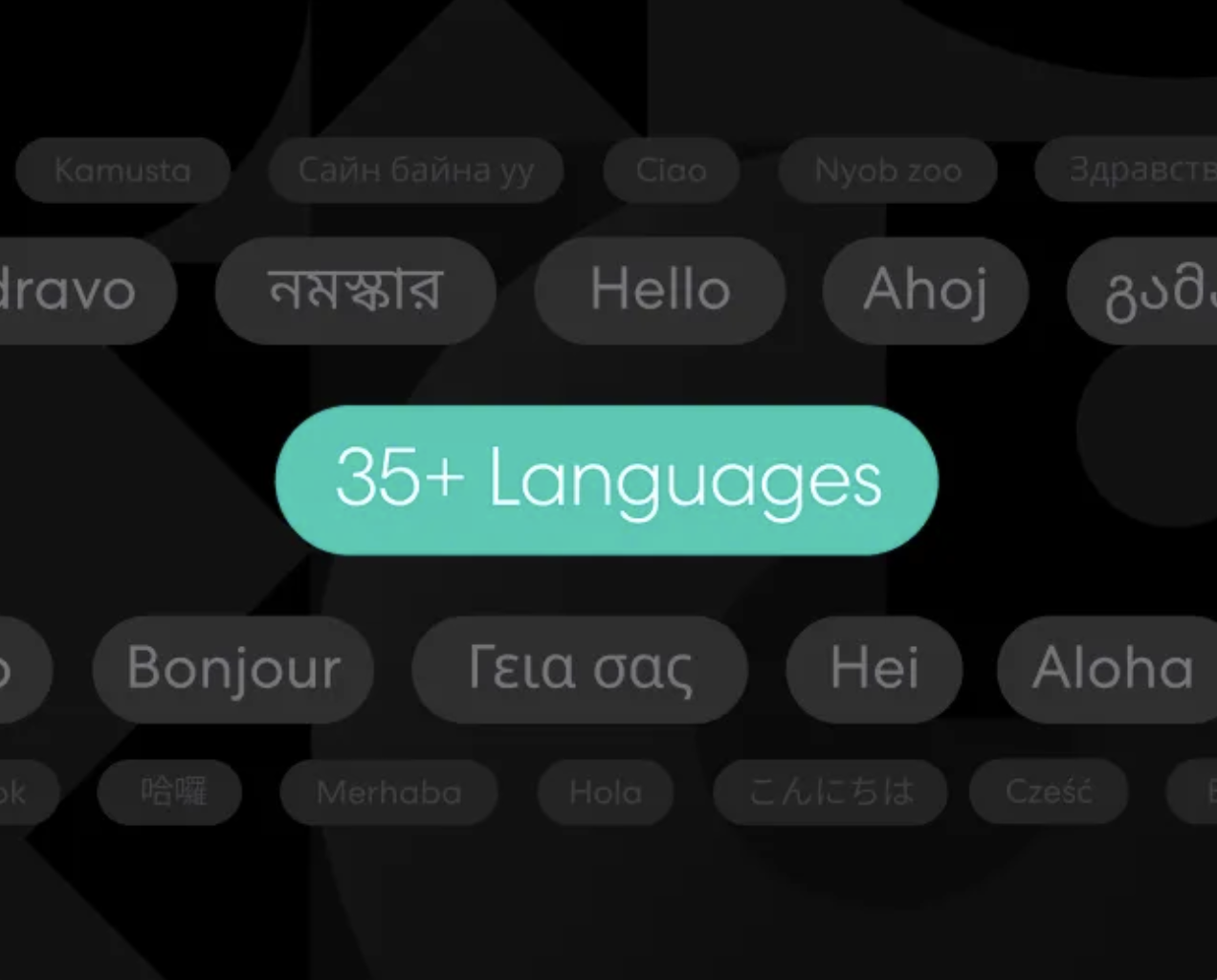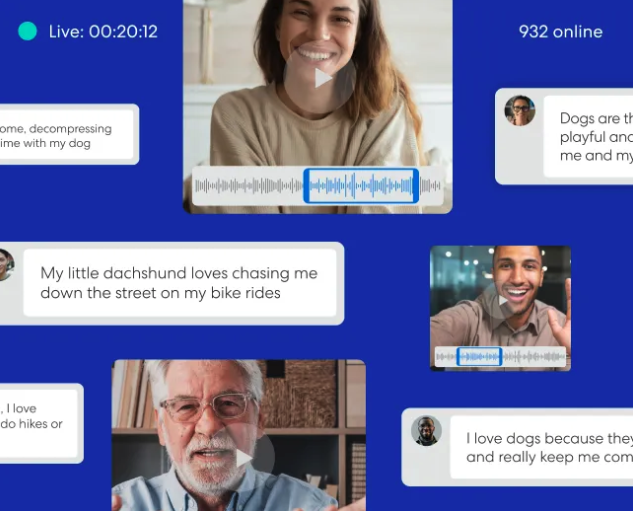
Research 101
Introducing: Poll Comparison - Streamline Concept Testing and Make Better Decisions Faster
Emmet Hennessy
November 24, 2025
Market Research
Articles

Research 101
Introducing: Poll Comparison - Streamline Concept Testing and Make Better Decisions Faster
Emmet Hennessy
November 24, 2025
Market Research
Articles

AI
Purpose-Built for Research AI is Here - a Letter from the CPO
Jessica Dubin
October 21, 2025
Market Research
Articles

AI
Purpose-Built for Research AI is Here - a Letter from the CPO
Jessica Dubin
October 21, 2025
Market Research
Articles

Advanced Research
Unlock Agile Global Insights: Using Remesh Multi-Language Conversations for Research Across Audiences
Customer Success Team
October 14, 2025
Market Research
Articles

Advanced Research
Unlock Agile Global Insights: Using Remesh Multi-Language Conversations for Research Across Audiences
Customer Success Team
October 14, 2025
Market Research
Articles

AI
The Prompt Is the New Moderator Guide
Anthony Lam
September 16, 2025
Market Research
Articles

AI
The Prompt Is the New Moderator Guide
Anthony Lam
September 16, 2025
Market Research
Articles

AI
Building an AI-Ready Research Stack: Beyond Data Preparation
Anthony Lam
September 9, 2025
Market Research
Articles

AI
Building an AI-Ready Research Stack: Beyond Data Preparation
Anthony Lam
September 9, 2025
Market Research
Articles

AI
Agentic AI for Research: A Practical Primer
Dan Reich
September 2, 2025
Market Research
Articles

AI
Agentic AI for Research: A Practical Primer
Dan Reich
September 2, 2025
Market Research
Articles

Advanced Research
Webinar Recap: Unlocking Depth at Scale - Remesh Video for Researchers
Customer Success Team
August 5, 2025
Market Research
Webinars

Advanced Research
Webinar Recap: Unlocking Depth at Scale - Remesh Video for Researchers
Customer Success Team
August 5, 2025
Market Research
Webinars

Transparency in AI: How Remesh Builds Trust Through Responsible Implementation
Ross Coudeyras
July 21, 2025
Articles

Transparency in AI: How Remesh Builds Trust Through Responsible Implementation
Ross Coudeyras
July 21, 2025
Articles

Advanced Research
Webinar Recap: Turning Employee Engagement Insights into Action with Remesh
Customer Success Team
June 16, 2025
Employee Research
Articles

Advanced Research
Webinar Recap: Turning Employee Engagement Insights into Action with Remesh
Customer Success Team
June 16, 2025
Employee Research
Articles
5 Ways to Conduct Agile Ad Testing
Ads can make or break your marketing campaign. Here are 5 ways to conduct Agile ad testing and create your next winning ad.



Ad testing is the process of reviewing consumer responses, feedback, and actions to create the most effective ads. This process can also help advertisers understand if their campaigns will drive sales before actually rolling out completed concepts to the public.
In what is now a popular quote about military combat, Prussian Field Marshal Helmuth von Moltke once famously said that “no plan survives contact with the enemy.” We believe that the same is true for ad messaging - ad ideas are only as great as audience opinion.
Here are five ways to conduct Agile ad testing, so only your best and brightest ad ideas go live.

Active Ad Testing
These methods involve speaking to customers directly with various ad concepts to gain their input before or after an ad goes live. It’s important not to mix up this type of ad testing with primary and secondary research. Active and passive ad testing (described below) falls under the larger category of primary research rather than replacing primary research as a strategy.

Online Focus Groups
Traditionally, marketers use in-person focus groups and customer panels to collect data driven insights before an ad campaign goes live. While these in-person research activities may give advertisers direct access to customers, the main drawback is the high recruitment and moderation cost.
On the flip side, online focus groups allow you to test ad messaging with large numbers of customers directly, at a low cost. A research platform like Remesh lets you analyze hundreds of verbatim responses in real-time, allowing you to get qualitative insights on your ad messaging at scale.

An online focus group conducted on Remesh
(Read findings report)

Physiological Tools
Marketers can now understand how customers feel about products and messaging thanks to new tools and technologies. With physiological tools such as facial coding, you can measure a customer’s physiological reactions to your ad messaging or concept. As a result, you may be able to uncover subconscious feelings they may have towards pre-launch concepts.
Eye tracking is one of the most well-known physiological tools, as it allows researchers to map out where customers’ lines of vision focus on when they are presented with stimuli. These tools can help marketers understand if customers are spending enough time looking at a featured product or if a company’s logo is prominent enough to be recognized.
Gazepoint, for example, uses the insights from its eye tracking tool to optimize user engagement and interaction with marketing and advertising materials.

Advanced Neuromarketing
Finally, advances in neuroscience have given marketers early exposure to consumers’ neural activity when introducing them to ads and marketing material. Researchers can now see increased brain activity using functional magnetic resonance imaging (fMRI), which provides deeper insights into customer’s emotional responses and engagement levels.
This technique provides marketers with advanced insight into how consumers think. However, the high cost of such research has limited neuromarketing to a handful of brands and companies.
Read: 3 Qual Concept Testing Methods & Case Studies

Passive Ad Testing
Rather than approaching customers directly for feedback, this method relies on observing how customers interact with a digital ad and extracting insights from that behavior.

A/B Testing
A/B testing, also known as split testing, is a method of testing that involves testing two versions of an ad simultaneously. Researchers will evenly split the target audience into two groups, with each group exposed to one version of the ad. Marketers can then determine the impact of the modified variable on audience engagement by comparing how the two ads perform.

Source: Microsoft
The benefit of using A/B testing is that it is inexpensive and straightforward to conduct. It is also a surefire method for companies looking to enhance their marketing strategies. "We have recognized A/B Testing's ability to help continually improve a company's spending efficiency," said Adam Coomes, President of marketing company Salt Rank, "while increasing clicks and conversions on the same budget.”
While A/B testing has advantages, there are some disadvantages to the method worth considering. For instance, there is a limit to how many ideas teams can test simultaneously. If a firm wishes to test multiple ads, running multiple A/B tests can be time-consuming and expensive, especially if research teams conduct on many variables.
Read: How to Write a Discussion Guide (eBook)

Multivariate Testing
Multivariate testing is a method of testing multiple aspects of an advertising campaign simultaneously. In this case, teams try several ad combinations together, which can help to determine the most effective combination among the variations.

A multivariate digital ad test could involve variables like color, ad positioning, and the use of images within the ad. Other factors, such as traffic over time, may also be used. At the end of a testing period, the ad with the most compelling mix of variables is declared the winner.
You can review this method in action in a recording of one Remesh conversation.

Wrapping up Agile Ad Testing
Since ad testing methods vary considerably in terms of approach and ad budget, it’s crucial to ensure that the strategies you adopt align with your company's goals and resources. We can’t wait to see you crush it with your next ad test!
Interested in finding new ways to test your next ad? Learn how AI can be applied to concept testing of all kinds in our free eBook below!{{cta('ef710940-9ea4-4d02-ac37-bdefde29d3cf')}}
-
Lorem ipsum dolor sit amet, consectetur adipiscing elit. Suspendisse varius enim in eros elementum tristique. Duis cursus, mi quis viverra ornare, eros dolor interdum nulla, ut commodo diam libero vitae erat. Aenean faucibus nibh et justo cursus id rutrum lorem imperdiet. Nunc ut sem vitae risus tristique posuere.
-
Lorem ipsum dolor sit amet, consectetur adipiscing elit. Suspendisse varius enim in eros elementum tristique. Duis cursus, mi quis viverra ornare, eros dolor interdum nulla, ut commodo diam libero vitae erat. Aenean faucibus nibh et justo cursus id rutrum lorem imperdiet. Nunc ut sem vitae risus tristique posuere.
-
More

Introducing: Poll Comparison - Streamline Concept Testing and Make Better Decisions Faster

.png)

.png)
Read More

.png)
.png)
.png)

.png)

.png)
Learn More

.png)
.png)
.png)


Unlock Agile Global Insights: Using Remesh Multi-Language Conversations for Research Across Audiences

.png)

.png)
Read More

.png)
.png)
.png)

.png)

.png)
Learn More

.png)
.png)
.png)
Stay up-to date.
Stay ahead of the curve. Get it all. Or get what suits you. Our 101 material is great if you’re used to working with an agency. Are you a seasoned pro? Sign up to receive just our advanced materials.




